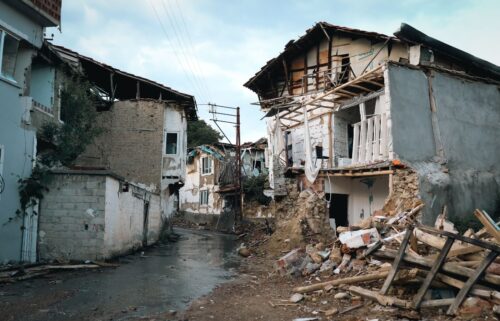Article • Expose the Heist: Power and Policy in Unprecedented Times
Trump’s Disaster Preparedness Order Sets Stage for Federal Withdrawal

Article • Expose the Heist: Power and Policy in Unprecedented Times
Fact-based, data-driven research and analysis to advance democratic debate on vital issues shaping people’s lives.
Center for Economic and Policy Research
1611 Connecticut Ave. NW
Suite 400
Washington, DC 20009
Tel: 202-293-5380
Fax: 202-588-1356
https://cepr.net
While Department of Homeland Security Secretary Kristi Noem recently stated she hopes to “eliminate” the Federal Emergency Management Agency (FEMA), the administration’s actions suggest it is continuing to scale down operations, hiding behind bureaucratic language to conceal its true intentions.
In a March 19 executive order, Trump advocated a “risk-informed approach” to national resilience by empowering state, local, and individual disaster preparedness. That sounds reasonable, but reading between the lines reveals a much less active role for the federal government in disaster preparedness and recovery.
One primary action of the executive order is to create a National Resilience Strategy to identify the nation’s priorities and methods for achieving increased resilience. This strategy must be published within 90 days of the order and reviewed and revised at least every four years. Part of this strategy is to “streamline preparedness operations” in the name of “efficiency.” The other main actions are to review and modify a slew of federal policies under the banners of critical infrastructure, continuity, preparedness, and response and to develop a National Risk Register “that identifies, articulates, and quantifies natural and malign risks to our national infrastructure, related systems, and their users.”
So, what is the purpose of this executive order? To put it in plain English, the goal is to delineate what the federal government, states, and localities are responsible for regarding disaster preparedness and response. Basically, this order tells the Homeland Security Secretary to tweak the rules on how the federal, state, and local governments communicate to each other during disasters to make sure everyone understands who’s doing what and can actually communicate properly. Again, not a bad idea. However, right at the top, Section 1 states, “Federal policy must rightly recognize that preparedness is most effectively owned and managed at the state, local, and even individual levels, supported by a competent, accessible, and efficient Federal Government.” What that support looks like is never stated. In other words, the federal government wants to be that friend who is always glued to their phone but never responds to texts or calls.
Understanding what the Trump Administration does is really about seeing how all the pieces fit together. This action, in concert with another recent executive order that established a review council to evaluate “whether FEMA can serve its functions as a support agency” and firings at the agency, indicates that Trump wants nothing to do with disaster preparedness and response. He has stated publicly that it is a state issue. However, states and localities – , particularly poorer states and rural communities – cannot cover these costs. Can a smaller, less effective FEMA provide the support those governments need? Absolutely not. Rural communities are already at a disadvantage when it comes to receiving mitigation funding. Less funding and support will only deepen existing inequities.
Unless the tradeoff is pumping the amount the US spends on defense into building resilient communities, Trump’s latest order means a continued path toward tragedy. Combined with actions such as eliminating environmental regulations and deforestation on public lands, disasters will only get worse and more frequent from here on out. Now is not the time to withdraw from communities that need federal support the most.